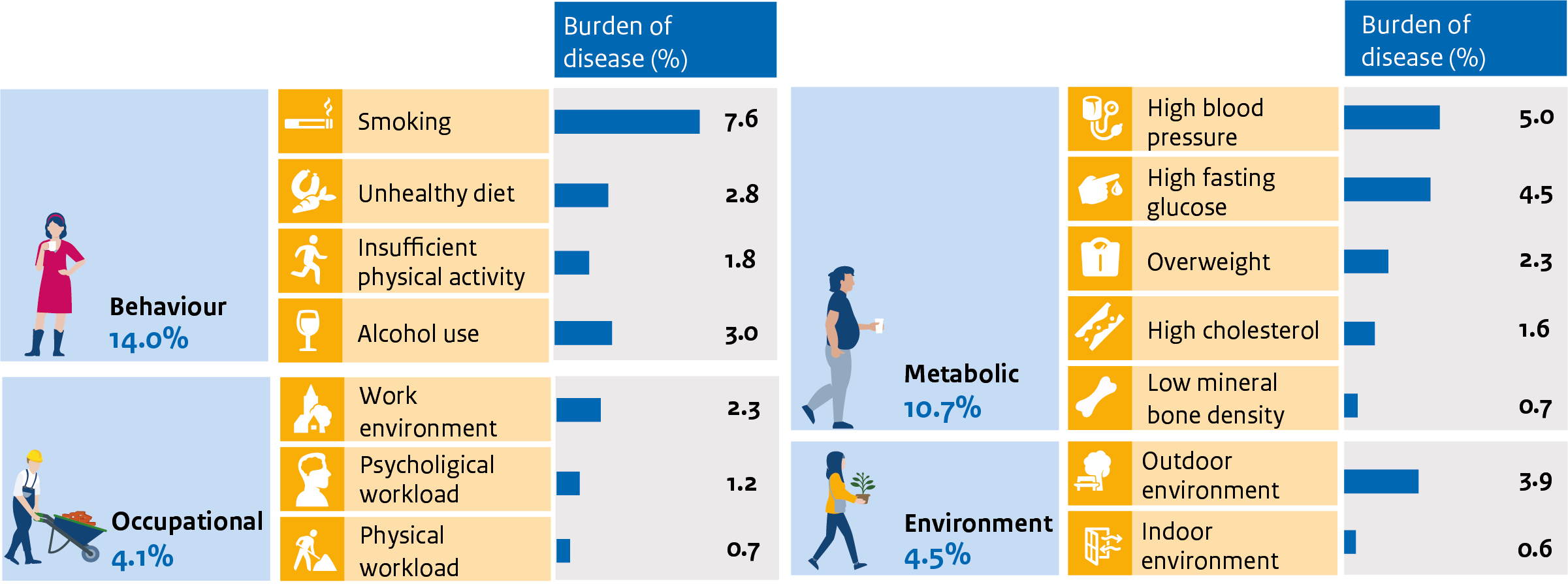Interactive overview of burden of disease data
For a selection of risk factors, including alcohol, work, overweight, and smoking, the amount of disease burden has been calculated. All data regarding the contribution of risk factors to the disease burden can be found in a interactive overview.
Risk factors
Risk factors are characteristics or exposures that increase the likelihood of developing a disease or health problem. Understanding these risk factors is essential in the study of the burden of disease, which refers to the impact of health problems on a population. Common risk factors include unhealthy behaviours like smoking, alcohol consumption, and physical inactivity. Other important risk factors are related to diet, such as high salt or sugar intake, and environmental exposures, including air pollution or UV (Ultraviolet) radiation.
Smoking is the most important risk factor
Of all risk factors, smoking is with 7.6% the most important cause of disease burden, followed by high blood pressure, high blood sugar levels and outdoor environment (mainly bad air quality). In total behaviour risks are responsible for 14%, metabolic for 10.7%, environment for 4.5% and occupational risks for 4.1% of the tola burden of disease.
Figure: Risk factors and burden of disease (Source: Volksgezondheid Toekomst Verkenning)
Burden of disease % | |
| Behaviour | 14 |
| Smoking | 7.6 |
| Unhealthy diet | 2.8 |
| Insufficient physical activity | 1.8 |
| Alcohol use | 3 |
| |
| Metabolic | 10.7 |
| High blood pressure | 5 |
| High fasting glucose | 4.5 |
| Overweight | 2.3 |
| High cholesterol | 1.6 |
| Low mineral bone density | 0.7 |
| |
| Occupational | 4.1 |
| Work environment | 2.3 |
| Psycholigical workload | 1.2 |
| Physical workload | 0.7 |
| |
| Environment | 4.5 |
| Outdoor environment | 3.9 |
| Indoor environment | 0.6 |
- H.B.M. Hilderink (RIVM)
- M.J.J.C. Poos (RIVM)
- M.H.D. Plasmans (RIVM)
- P.E.D. Eysink (RIVM)
- M. Buijs (RIVM)

